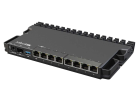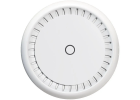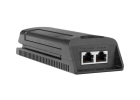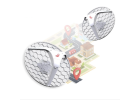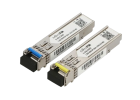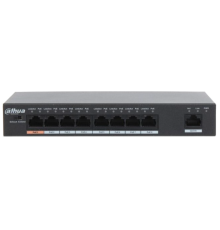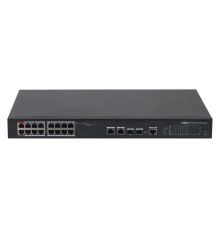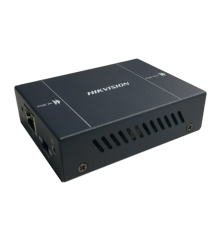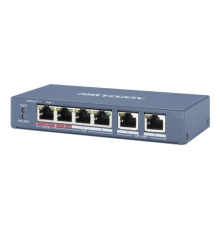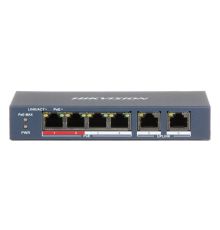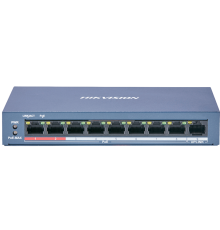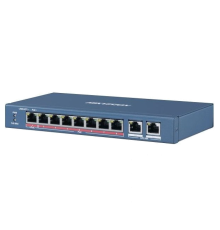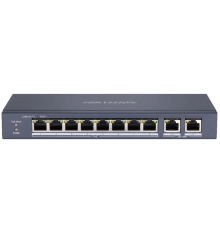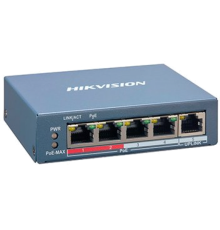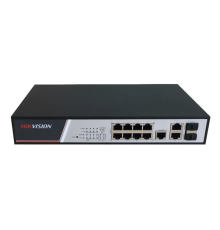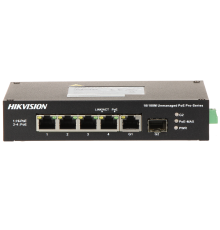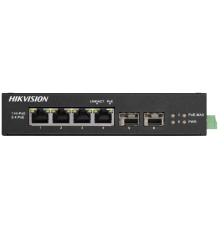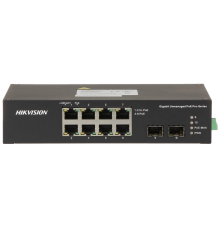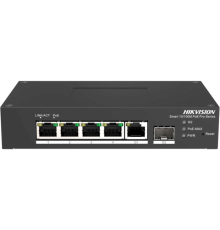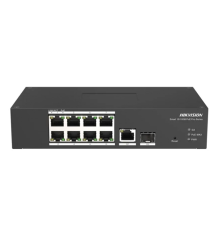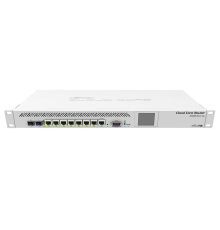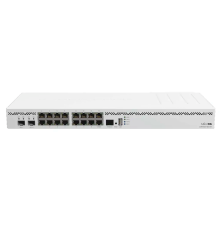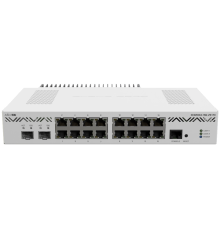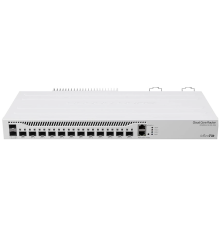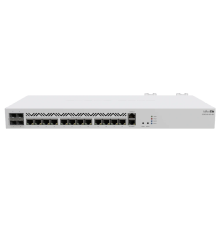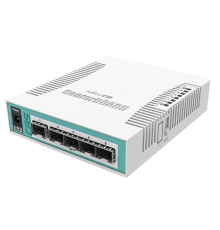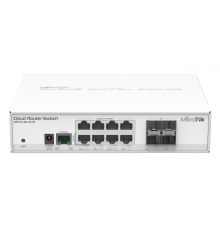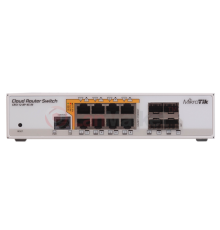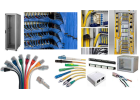
Network equipment is a complex of technical devices designed to organize and maintain the operation of computer networks. It performs a number of basic functions, including data transmission between devices, network resource management, security provision, and network operation control.
The following components are included in the network equipment:
1. Routers - devices that transmit information between different network segments. They select the optimal path for data packet transmission and regulate network traffic.
2. Switches - devices designed to manage traffic within a network. They provide communication between computers and other network equipment.
3. Switching routers - combined devices that combine the functions of a router and a switch. They allow efficient traffic management in a local network and provide connectivity to remote network segments.
4. Wireless access points - devices that create a wireless network through which you can connect to the Internet or another local network. They provide stable and reliable connection to devices supporting Wi-Fi.
5. Modems - devices designed to convert the signal from network providers into a format understandable by a computer or other network equipment.
6. Media converters - devices that convert different types of network media, such as fiber-optic cable and copper cable, to ensure device compatibility in the network.
7. Firewalls - devices that provide network protection against unauthorized access, malware, and other threats. They control and filter incoming and outgoing traffic to ensure network security.
Network equipment plays an important role in modern information technology, providing fast and stable data transmission, convenient network connectivity, and information security.
The following components are included in the network equipment:
1. Routers - devices that transmit information between different network segments. They select the optimal path for data packet transmission and regulate network traffic.
2. Switches - devices designed to manage traffic within a network. They provide communication between computers and other network equipment.
3. Switching routers - combined devices that combine the functions of a router and a switch. They allow efficient traffic management in a local network and provide connectivity to remote network segments.
4. Wireless access points - devices that create a wireless network through which you can connect to the Internet or another local network. They provide stable and reliable connection to devices supporting Wi-Fi.
5. Modems - devices designed to convert the signal from network providers into a format understandable by a computer or other network equipment.
6. Media converters - devices that convert different types of network media, such as fiber-optic cable and copper cable, to ensure device compatibility in the network.
7. Firewalls - devices that provide network protection against unauthorized access, malware, and other threats. They control and filter incoming and outgoing traffic to ensure network security.
Network equipment plays an important role in modern information technology, providing fast and stable data transmission, convenient network connectivity, and information security.
Dahua PFS3009-8ET-96 PoE 100 Mbps 8-port
PFS3009-8ET-96
Dahua PFS3009-8ET-96 PoE is an 8-port switch that supports Power over Ethernet (PoE) and provides data transmission at s..
3 426.73 грн
Dahua PFS4218-16ET-190 PoE 100 Mbps
PFS4218-16ET-190
Dahua PFS4218-16ET-190 PoE is a managed switch with 16 ports, equipped with Power over Ethernet (PoE) technology and sup..
12 636.06 грн
Hikvision DS-1H34-0101P PoE extender
DS-1H34-0101P
Hikvision DS-1H34-0101P PoE extender is a high-quality device designed to extend the range of power and data transmissio..
1 709.08 грн
Hikvision DS-3E0106HP-E PoE 100 Mbps
DS-3E0106HP-E
Hikvision DS-3E0106HP-E PoE is a compact and user-friendly 4-port unmanaged switch, specially designed for data and powe..
2 741.38 грн
Hikvision DS-3E0106P-E/M PoE 100 Mbps
DS-3E0106P-E/M
Hikvision DS-3E0106P-E/M PoE is a compact and reliable unmanaged switch with four ports, capable of providing high-speed..
2 295.91 грн
Hikvision DS-3E0109P-E(C) PoE 8-port switch
DS-3E0109P-E(C)
Hikvision DS-3E0109P-E(C) is an 8-port PoE switch developed by Hikvision, a global leader in video surveillance and secu..
4 831.69 грн
Hikvision DS-3E0109P-E/M(B) PoE 8-port switch
DS-3E0109P-E/M(B)
Hikvision DS-3E0109P-E/M(B) PoE - a reliable and advanced switch with built-in support for Power over Ethernet (PoE) tec..
3 490.98 грн
Hikvision DS-3E0310HP-E PoE 100 Mbps
DS-3E0310HP-E
Hikvision DS-3E0310HP-E is an 8-port unmanaged switch that provides high performance and convenience in use. It is equip..
5 953.94 грн
Hikvision DS-3E0310P-E/M PoE 100/1000 Mbps
DS-3E0310P-E/M
Hikvision DS-3E0310P-E/M is an 8-port unmanaged switch with PoE support. It provides data transmission at a speed of 100..
3 940.74 грн
Hikvision DS-3E1105P-EI PoE 100 Mbps
DS-3E1105P-EI
Hikvision DS-3E1105P-EI PoE is a managed Ethernet switch with four ports that provides data transmission at a speed of 1..
2 351.59 грн
Hikvision DS-3E2310P PoE 100/1000 Mbps
DS-3E2310P
The Hikvision DS-3E2310P PoE network switch is a high-performance managed device with eight ports capable of providing h..
21 074.38 грн
Hikvision DS-3T0306HP-E/HS PoE 100/1000 Mbps
DS-3T0306HP-E/HS
Hikvision DS-3T0306HP-E/HS PoE is a high-quality 4-port unmanaged switch designed to provide reliable data transmission ..
4 180.61 грн
Hikvision DS-3T0506HP-E/HS PoE 1000 Mbps
DS-3T0506HP-E/HS
Hikvision DS-3T0506HP-E/HS PoE is a powerful and reliable unmanaged switch designed specifically to meet the needs of hi..
5 418.52 грн
Hikvision DS-3T0510HP-E/HS PoE 1000 Mbps
DS-3T0510HP-E/HS
Hikvision DS-3T0510HP-E/HS PoE is a high-quality 8-port unmanaged switch that provides a reliable and efficient solution..
9 012.30 грн
Hikvision DS-3T1306P-SI/HS PoE 10/100 Mbps
DS-3T1306P-SI/HS
Hikvision DS-3T1306P-SI/HS is a 4-port managed Power over Ethernet (PoE) switch with a data transfer rate of 10/100 Mbps..
5 320.00 грн
Hikvision DS-3T1310P-SI/HS PoE 10/100 Mbps
DS-3T1310P-SI/HS
Hikvision DS-3T1310P-SI/HS is a high-quality managed switch supporting Power over Ethernet (PoE), which provides stable ..
8 870.94 грн
MikroTik (CCR1009-7G-1C-1S+)
CCR1009-7G-1C-1S+
MikroTik CCR1009-7G-1C-1S+ is a powerful 9-port router designed by MikroTik to provide stable and fast network connectiv..
23 845.75 грн
MikroTik (CCR2004-16G-2S+)
CCR2004-16G-2S+
MikroTik CCR2004-16G-2S+ is a powerful 18-port router that provides a wide range of capabilities for efficient network t..
20 449.43 грн
MikroTik (CCR2004-16G-2S+PC)
CCR2004-16G-2S+PC
The MikroTik CCR2004-16G-2S+PC router is a high-performance network device designed to ensure efficient and reliable ope..
20 449.43 грн
MikroTik (CCR2004-1G-12S+2XS)
CCR2004-1G-12S+2XS
Router MikroTik CCR2004-1G-12S+2XS is a professional network device designed for building powerful and reliable networks..
26 131.81 грн
MikroTik (CCR2116-12G-4S+)
CCR2116-12G-4S+
MikroTik CCR2116-12G-4S+ is a powerful 16-port router that is ideal for organizing high-complexity networks. This reliab..
44 199.23 грн
MikroTik (CRS106-1C-5S)
CRS106-1C-5S
MikroTik CRS106-1C-5S is a versatile 6-port router specifically designed to provide high-quality network connections. It..
2 579.47 грн
MikroTik (CRS112-8G-4S-IN)
CRS112-8G-4S-IN
MikroTik CRS112-8G-4S-IN is a managed switch with 8 ports that offers a reliable and high-performance solution for netwo..
6 401.13 грн
MikroTik (CRS112-8P-4S-IN) PoE
CRS112-8P-4S-IN
MikroTik CRS112-8P-4S-IN is a managed switch with Power over Ethernet (PoE) support and 8 ports. It is a reliable and mu..
9 133.52 грн
Showing 25 to 48 of 185 (8 Pages)
